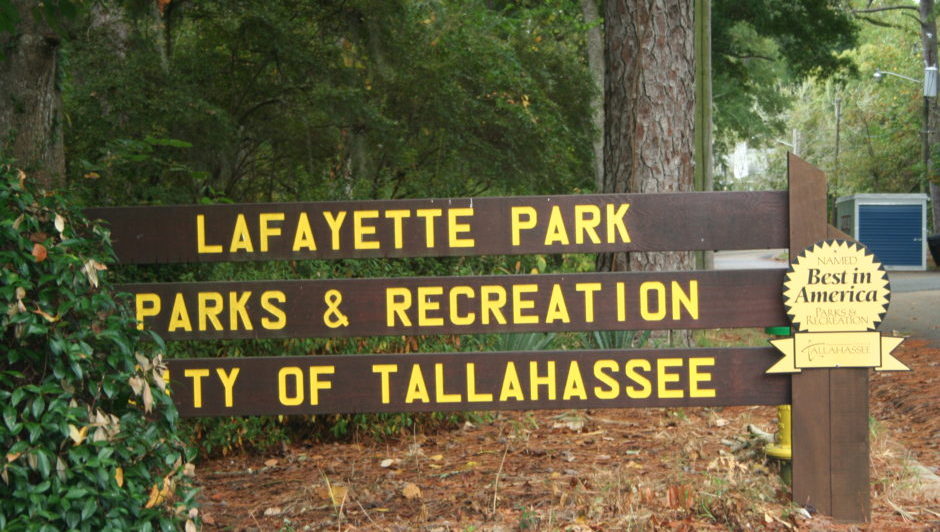Gerald Ensley: When neighbors are informed, good things happenA developer tore down the historic house at 800 N. Calhoun St. to erect an office building without much objection. But when he prepared to cut down trees along Calhoun for a driveway that might funnel traffic into the Lafayette Park neighborhood, residents protested. Happily, public involvement made a difference: The developer agreed to move the driveway and save the trees. But the question remains: Why aren’t local residents better notified about development in their midst? “Our No. 1 issue for the past year has been to improve the notification process,” said Stephen Hogge, president of the Council of Neighborhood Associations (CONA). “It’s a significant issue.” The lot at 800 N. Calhoun is a triangle formed by the intersection of Thomasville Road and Calhoun Street, right across from Baskin-Robbins. It’s being redeveloped as a three-story office building for the Florida School Boards Insurance Trust. Some were aghast when development commenced in May with demolition of the 1898 Johnson-Carter home. But the house, rented for offices since 1976, had been much-remodeled and minimally maintained. It was past restoration and would have cost $100,000 to move elsewhere. Instead, the hot-button issue was city approval of the developer’s site plan to build a driveway that would send traffic across Calhoun Street to McDaniel Street and force removal of a dozen trees. That would have removed the tree canopy at the beginning of the Calhoun Street historic district. It also might have enticed drivers to cut through the Lafayette Park neighborhood to Miccosukee Road. But there was a wild card: Leon County maintains Calhoun and thus had final say on the location of the driveway. So on May 12, Joe Brown, Leon County’s director of engineering services, convened a meeting of Lafayette Park residents and developer Terry Ooten at 800 N. Calhoun. The result: Ooten agreed to put the driveway at the south end of the lot, eliminating the exit into the neighborhood and the need to remove trees along Calhoun. Problem solved. But Ooten asked why neighbors hadn’t objected before bulldozers arrived; the neighbors asked why no one had told them about the project. “We weren’t notified at all,” said Jim Pfost, president of Lafayette Park Neighborhood Association. “I think the process needs to change.” City and county officials said their processes provide notification — but it’s not perfect. Both governments provide notice of zoning changes and Comp Plan amendments through newspaper legal notices and mail-outs to property owners in a 500-foot radius. They post notices of all developments on their Web sites. But not every project involves a zoning or Comp Plan change. Sometimes 500 feet doesn’t encompass all the affected households. And many developments that already meet land-use regulations for a site can be approved without notification to residents, as government officials try to satisfy developers’ desire for timely permitting. “We need to balance the efficiency of the permitting process with the desire for public impact,” said Karen Jumonville, city land-use administrator. Besides, notification isn’t a cure-all, said Tony Biblo, of Leon County growth management. Biblo said legal ads and mail-outs give residents only the bare bones of a project; they still have to investigate how it affects them. He said developments can’t be stopped just because residents don’t like them; residents must show how they violate codes. He said that most residents have no idea how to get involved in the process and that government does little to educate them. “We can make the process wider (more notification),” Biblo said. “But if we don’t make it deeper (more education), what quality is it?” The city and county plan to extend the radius of notification to 1,000 feet. The county offers online notification about its projects to anyone who requests it. Both governments urge developers to meet with neighbors during the planning stages. CONA keeps a vigilant eye on the growth-management departments. “We want the input,” Jumonville said. “If everyone participates upfront, we have the opportunity to design around constraints that might not be palatable to a neighborhood.” And even if it came at the 11th hour, that’s what happened at 800 N. Calhoun. “It just goes to show what happens when people get involved,” Hogge said. “Things get worked out. That’s what it’s all about.” |
|
|
